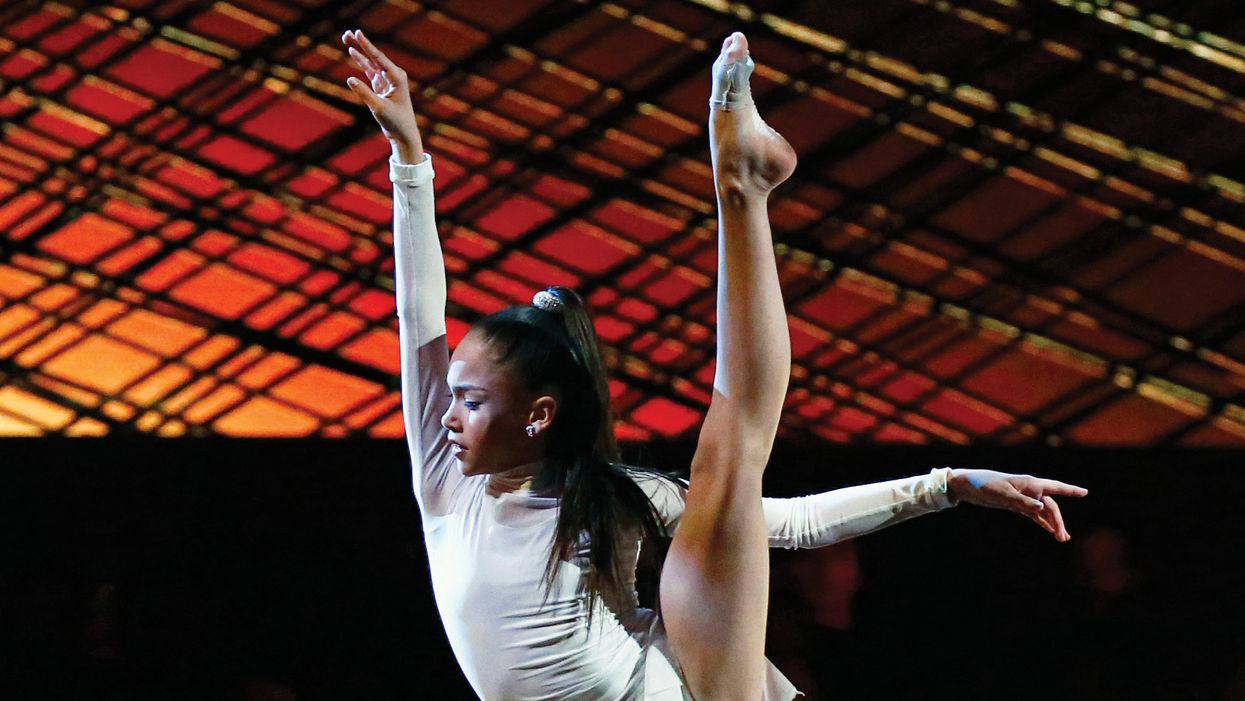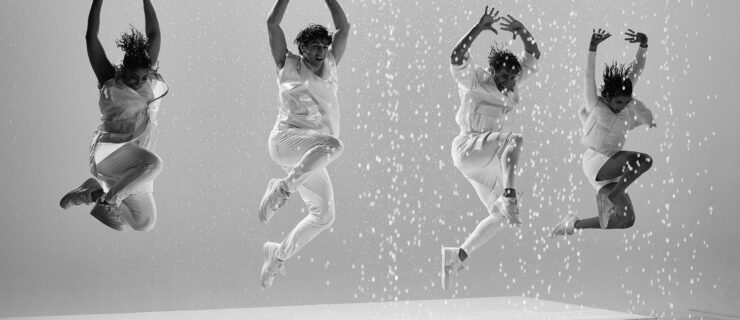So You Wanna Dance on TV? How Comp Kids Are Making the Leap
In February 2016, “So You Think You Can Dance: The Next Generation” released a casting call for dancers ages 8 to 12. Determined to make it onto the show, then–10-year-old Emma Hellenkamp prepared a jazz solo for the L.A. audition. The next part of her story may come as a surprise to fans of the series: She didn’t make the cut. But Emma’s competition background meant she was well-versed in several dance styles, so she opted to audition again in Chicago—this time with a tap solo. And the rest is history: Emma not only made it onto the show, but also progressed all the way to the final four.
“SYTYCD: The Next Generation” is part of a larger trend of dance-competition TV embracing younger dancers, with shows including “World of Dance” and the upcoming “Dancing with the Stars Junior” following suit. And like Emma, many of the dance kids trying out their skills on these shows come from the competition-and-convention circuit. What is it about these two worlds that smooths the transition from one to the other?
Building a Competitive Mindset
On the surface, the connection between reality TV competitions and dance competitions is obvious: “They’re both competitions,” says 12-year-old Diana Pombo, who competed on “World of Dance” in 2017. But what that commonality means on a practical level is a bit more nuanced.
For one, comp kids already have experience performing in front of judges. “That consistent pressure helps them develop a level of professionalism from a young age,” says Victor Smalley of Stars Dance Studio in Miami, FL. They know how to handle the emotions that come with being judged—nerves, shyness, excitement—without letting it compromise their performance.
 Pombo competing at The Dance Awards (courtesy Break the Floor)
Pombo competing at The Dance Awards (courtesy Break the Floor)
Involvement in the competition-and-convention circuit also tends to offer exposure to big-name choreographers from the industry. “After winning Mini Female Best Dancer at the Dance Awards in 2016, I got the opportunity to assist at NUVO, Jump, and 24Seven for a year,” Diana says. “I took so many classes from different choreographers each week.” Many of those same choreographers work on TV dance shows, giving comp kids the advantage of familiarity.
Even if a young competition dancer never comes in contact with a choreographer from the show, she has another secret weapon in her back pocket: versatility. “Competitive dancers tend to be trained in a variety of styles,” says Sasha Altukhov of Center Stage Performing Arts Studio in Orem, UT. “They’re physically prepared to adapt to different choreography,” and to pick up that choreography quickly—two top requirements for most TV dance shows.
Forming Valuable Connections
While Emma decided to audition for “SYTYCD: The Next Generation” without any prior scouting, more often than not producers reach out to top competition studios to recruit for their shows. That’s how Diana’s journey on “World of Dance” all began. “A producer scouted a group of dancers from Stars Dance Studio, and once they saw my dance videos, they invited me to audition in person in Atlanta,” she says. However, the studio connection only got her foot in the door. She had to make it through several rounds of in-person auditions before actually making it onto the show.
 Emma Hellenkamp (left) and Gaby Diaz on “So You Think You Can Dance” (photo by Patrick Wymore, courtesy Fox)
Emma Hellenkamp (left) and Gaby Diaz on “So You Think You Can Dance” (photo by Patrick Wymore, courtesy Fox)
Often, studios that are competition mainstays become regular scouting grounds for TV shows. Kim DelGrosso, co-owner of Center Stage Performing Arts Studio in Orem, UT, which boasts several TV dance show alums, keeps her dancers’ headshots and resumés on file for booking agents. “We get calls at the studio for almost every show, so I make sure all of my dancers are prepared to move forward with the audition process,” she says. She’s also had scouts discover her dancers at competitions.
Anticipating Challenges
While competitive dancers come to the television stage with a bit of familiarity, it’s still ultimately a foreign world for them. “It’s just a different atmosphere,” Emma says. “You have interviews mixed into rehearsals, there’s hair and makeup and wardrobe, and you’re learning up to five pieces a week.”
Fortunately, many of these dancers have the support of their studio owners and teachers, who often have a good idea of what these TV shows will require of their young dancers. “Knowing how to act in an interview is going to be a big deal-breaker for who they choose,” says Cheyenne Murillo of Center Stage. “If they aren’t comfortable speaking on camera, the show can’t use them.” Dancers at Center Stage prepare for TV competition shows with acting lessons and interview coaching. “We bring in pageant people to give them private instruction,” DelGrosso says. “We don’t tell them what to say. We just give them the confidence to be themselves.” Smalley also works on his dancers’ interview skills, giving them on-camera interview experience with the pressure of an audience. “I remind them that they’re no longer representing a studio brand. They’re becoming their own brand, and they need to trust their intuition to be a true artist,” he says.
Dancing on camera can also be a bit of a learning curve for these dancers, as it affects things like angles and focus. Some conventions offer specific classes for dance on camera. At Dancerpalooza, for example, “SYTYCD” regular Mandy Moore works with students to help them learn about angles and cues.
Returning to Earth
When Emma attended her first competition after “SYT,” she admits that it was a bit of an adjustment. “People kept coming up to me and asking if I was Emma from ‘SYTYCD,’ ” she says. “I’m so not used to that.” But as a whole, she feels the experience has helped her be a better competitive dancer. “It’s really broadened my vocabulary, and I get much less nervous before going onstage,” she says. She’s thankful to be back on a definite schedule, taking regular technique classes and bonding with her team.
 Hellenkamp competing at Celebrity Dance (courtesy Celebrity Dance)
Hellenkamp competing at Celebrity Dance (courtesy Celebrity Dance)
Not all dancers transition out of reality TV competitions quite so smoothly. “These shows can either make or destroy you,” Smalley says. Sometimes, a small dose of fame is enough to convince young dancers that they no longer need to train. “They feel like they’ve moved beyond studio life, because they’re a celebrity now. I tell my students, once you stop training, it’s only a matter of time before someone passes you up.”
DelGrosso agrees. “When these kids come back feeling like big stars, it can be difficult for them to insert themselves back into the studio.” She helps her dancers get in the right mindset by reminding them that these TV shows are “just another job.”
For young dancers who manage to stay humble, the
experience can be a springboard for even more opportunities to learn and grow. Diana decided not to return to the competition scene after “World of Dance,” but that doesn’t mean she’s stopped training. “I competed in order to get stage practice, but ‘World of Dance’ has opened up so many performance opportunities for me,” she says. That said, she still attends regular conventions and master classes. “I have so much to learn,” she says. “This is just the beginning for me.”
A version of this story appeared in the May/June 2018 issue of
Dance Spirit with the title “From The Comp Stage to the Small Screen.”




